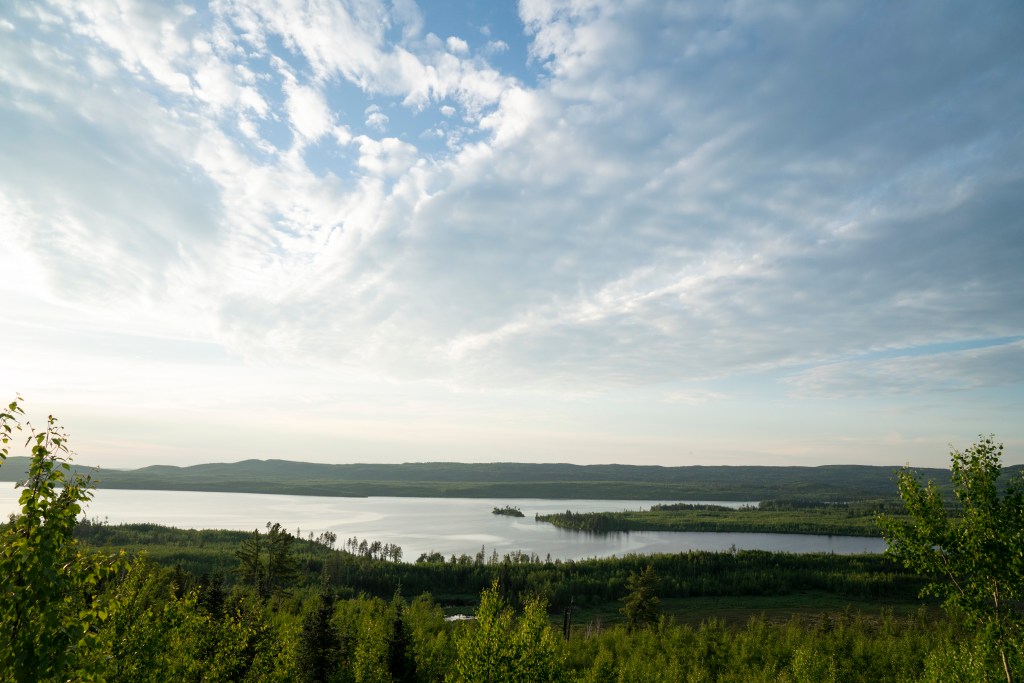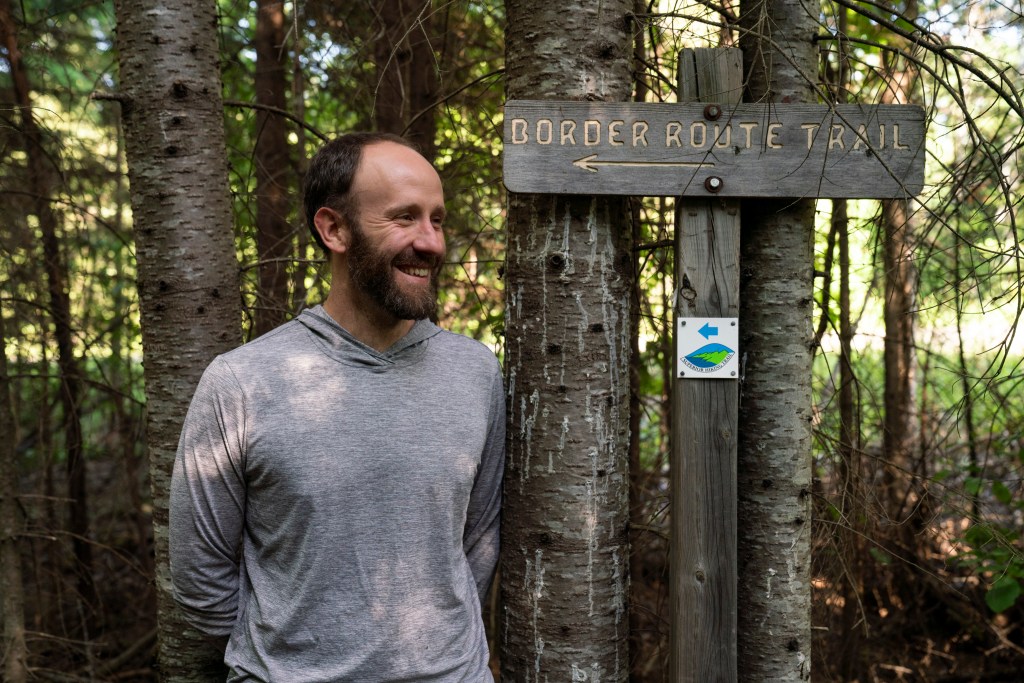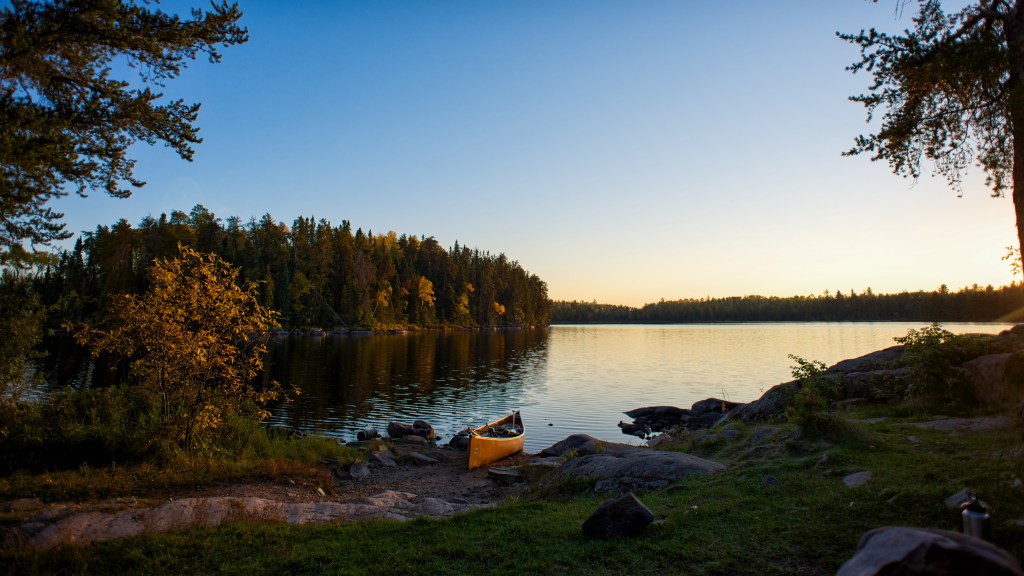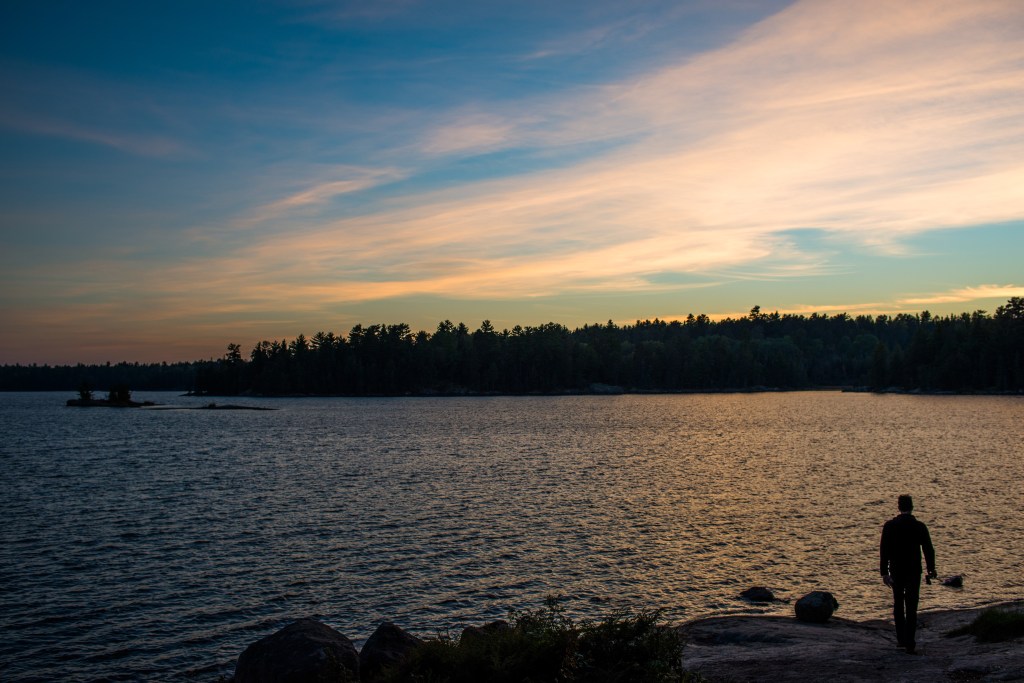Editor’s note: In publishing this article, Uncommon Path aims to educate readers about the ongoing dialogue around Minnesota’s Boundary Waters Canoe Area Wilderness. Since 2017, REI has advocated for the Boundary Waters Canoe Area Wilderness by joining the Boundary Water Business Coalition and by donating $18,500 to local nonprofit entities including Friends of the Boundary Waters Wilderness. This advocacy is part of the co-op’s greater commitment to supporting local community organizations that engage on conservation issues and fight for life outdoors.
Kurt Halverson has been to the Boundary Waters Canoe Area Wilderness (BWCAW) more times than he can count, going all the way back to his childhood. The 54-year-old scientist from St. Paul, Minnesota, grew up about 45 minutes outside Ely, Minnesota, one of the gateways into the federal preserve that straddles the U.S.-Canada border. His trips to the area have evolved over the years, as he moved from childhood to young adulthood to fatherhood, but one thing has remained the same: his love for the vast wilderness area.
“It’s a unique and special place,” said Halverson. “You may not see anyone else for days when you’re there. There aren’t many places like that left.”
The Boundary Waters is one of America’s most-visited wilderness destinations. Like many fans of the region, Halverson has spent his time in the Boundary Waters canoeing, backpacking and camping, utilizing the unique network of waterways and forest trails that connect the area’s more than 1,000 lakes.
Driving through booming small towns en route to the Boundary Waters used to be a constant in Halverson’s life. Over the years, however, he has witnessed a steady decline in the economy of the local communities as he made his way north. The downturn can be linked to multiple factors, including a decrease in mining jobs, according to Erik White, labor market analyst with the Minnesota Department of Employment and Economic Development. “Mining makes up only about 10 percent of the economy,” White said. “But those jobs pay much higher wages than other industries.”
Consider the average mining wage of $99,000 annually, White said, versus the average salary of all jobs in the region, which comes to $45,000. Mining is an industry that fluctuates heavily from year to year. Between 2015 and 2016, for instance, more than 600 mining jobs disappeared. Some have returned but not all.
Taconite, a form of iron ore mining, is an industry that used to be integral to the Minnesota economy. But as demand for the mineral shifted and sometimes dropped precipitously, so too did the economy. Halverson has borne witness. “Every year I see the effects,” he said. “There’s always another business boarded up as I pass through towns like Ely.”
The taconite downturn can be traced back to the 1980s, according to Jeffrey T. Manuel, associate professor at Southern Illinois University and author of Taconite Dreams: The Struggle to Sustain Mining on Minnesota’s Iron Range. “When the steel industry downturned, taconite mining declined as well,” he said. “From there, it has been a roller coaster, but the long-term trend has been down, especially in regard to employment because automation does much of what people used to do in mines.”
All of which leaves Halverson conflicted as another type of mining—this time, a proposed sulfide ore copper mine near Birch Lake, just outside Ely—offers promise to his local economy but potentially threatens the wilderness area he loves. “It’s hard for me,” he said. “What’s more important: the economy or paddling around in a canoe?”

One of America’s most-visited wilderness destinations, the Boundary Waters could be impacted by a proposed sulfide ore copper mine in the area. (Photo Credit: Brendan Davis)
The Controversy
At the heart of the debate between those supporting and those fighting the new mine is the fact that copper mining is notably different from its iron ore predecessor. Iron ore mining wasn’t perfectly clean, but it is believed to have less of an impact on the environment than copper, according to Bruce Johnson, a retired EPA scientist and author of the seminal Regional Copper Nickel Study for Northeast Minnesota. “To process iron ore, you do release small amounts of sulfide, but not on par with copper,” he said.
There are politics involved, too, which only deepen the divide on the issue. “These are two diametrically opposed phenomena,” said Halverson. “It’s as conflict-laden an issue as you can come up with.”
Here’s the backstory: Twin Metals, the local subsidiary of Chilean mining company Antofagasta, owned two federal copper mining leases in the area for 50 years but had never started mining. The company allowed the leases to expire during the first Obama administration, then changed course at the direction of Antofagasta and filed for renewal in 2012. Copper prices were rising thanks to the mineral’s role in industrial applications, compounded by shrinking reserves, making the mineral attractive. The Obama administration turned the lease renewal request down in late 2016, unless an environmental review was done first.
With the Trump administration came a change of course. The Bureau of Land Management recommended renewing the leases, and Twin Metals got the go ahead to explore for copper in late 2018.
Pete Marshall, communications director for Friends of the Boundary Waters Wilderness, an organization dedicated to protecting clean water and wilderness stewardship in the Boundary Waters, said the area has been known for its vast copper deposits since the mid-20th century. “No one has opened a copper mine here before, largely due to environmental pushback and the low quality of the deposits,” he said. “It wasn’t economically or environmentally feasible.”
Marshall said that copper mining puts the Boundary Waters at high risk due to the potential for the mines to pollute the waters with heavy metals and other contaminants. How companies mine for copper is what Marshall is most concerned about. “To mine iron, companies remove the rock and use magnetic rollers to extract it,” he said. “Copper is diffused in the sulfide ore body and companies must pulverize it. When it is exposed to water or oxygen, the byproduct is sulfuric acid.”
This byproduct then seeps into the groundwater, said Marshall. “Then the sulfuric acid would be carried far and wide throughout the region,” he added. “The effects of iron ore mining are not nearly as alarming.”
Johnson, the retired EPA scientist, added that the sulfuric acid byproduct seeps into not just groundwater but surface water as well, leading to more widespread polluting.

Alex Falconer is running across the Boundary Waters in an attempt to save it. (Photo Credit: Brendan Davis)
The Runner
While he’s already intimately familiar with the Boundary Waters, Alex Falconer still felt like he experienced the area anew when he ran more than 50 miles there in June. A government affairs director for the Campaign to Save the Boundary Waters, a grassroots organization created by local residents to protect the wilderness area from sulfide ore copper mining, he’s using his passion for running to help the area he loves. His run in June launched Falconer’s Running for the Boundary Waters campaign—a roughly 110-mile run through the wilderness area, split into three parts.
“My main purpose is to draw attention to the proposed mining projects in the watershed of the BWCAW,” he said. “This is a national issue but awareness of it, and even the Boundary Waters’ existence, pales in comparison to big national parks like Yellowstone. It is an all-out assault on public lands.”
Phase one of Falconer’s run included the Border Route Trail, a roughly 65-mile section that he traversed from the east side to the Gunflint Trail. He ran with professional photographer Brendan Davis for the first 13 miles, then continued on his own for the remainder.
The run wasn’t all easy going. “I actually tripped on a rock at mile 17 and broke a toe, but I kept going,” he said. “I eventually bailed at mile 56 at the first road on the other side of the wilderness because I couldn’t use my foot effectively.”
During his run, Falconer clocked a surprising amount of elevation along the U.S.-Canadian border—he estimates he completed around 18,000 feet of climbing over the course of the run. “It was constantly up and down,” he said. “It was absolutely gorgeous—I got to see the boreal forest, the lakes and lots of wildlife, including a black bear.”
The ups and downs gave him a unique lens from which to view the varying ecosystems he encountered. “I saw streams, bogs, marshes and 300-year-old strands of pines,” he said. “When I got hot, I jumped into a lake. This is a seriously remote wilderness area.”
He ran phase two of his run in mid-October, setting a fastest known time of 11:53 on the Kekekabic Trail. Hand-in-hand with Falconer’s run is a petition he’s started for saving the Boundary Waters. Although raising awareness has been his primary goal, he eventually hopes to use the effort to help raise funds for the fight as well. “It’s a big fight to take on,” he said.

Supporters of the mine say it will bring back much-needed, higher-wage jobs to the area around the Boundary Waters. (Photo Credit: Steve Gausewitz)
The Supporters
From where she stands, Nancy Aronson Norr, chairperson of Jobs for Minnesotans, a coalition of members across businesses ranging from builders and contractors to local tourism agencies, isn’t concerned about the potential effects on the environment from Twin Metals. “The company will use a dry stacking process that will not exceed federal standards,” she said. “I’ve visited a similar mine—the Eagle Mine—in Michigan and was impressed by the technology to mitigate damage and keep the environment safe.”
The dry stacking process Aronson Norr points to is designed to remove most of the water content from the tailings, or waste rock, before a mining company stacks it near its facility. According to Julie Padilla, Twin Metals chief regulatory officer, the company plans to store about half of its tailings in this manner. The other half, she said, will be mixed with cement and placed back into the underground mine for storage.
Johnson, the retired scientist, said that tailings have always been an issue with mining, but that in a wet state like Minnesota, the dry stacking process falls short. “That’s a red herring,” he said. “Dry stacking is a concept that might work in much drier areas, but here we get 30 inches of rain annually, plus heavy snow. The chemical impact is not lessened with dry stacking under those conditions.”
Padilla, from Twin Metals, added, “The mine will be wholly underground, not an open pit, further mitigating risk. There will be no waste rock above the ground mixing with water or oxygen, so there’s no issue. We’re confident about its odds for success.”
Again, Johnson takes issue. “We’ve seen examples in the past where mines begin underground but can’t make a profit,” he said. “They then add an open pit, increasing the impact, which is what I expect to see here.”
Padilla said Twin Metals will also meet or exceed federal standards for processing, and that the mining will actually take place outside the buffer zones around the Boundary Waters. “My team has a group of environmentalists studying this issue and we care about the area and its waters,” she said. “We understand the concerns those opposed have and we think there would be benefits for sitting down at the table and discussing them.”
Presently, the mines and opposition groups are tied up in litigation. At least nine entities have joined forces to argue the legality of the Trump administration’s decision to reinstate the mining leases. The case has been in district court, and Marshall, with Friends of the Boundary Waters Wilderness, is hopeful there may be a decision soon.
In the meantime, Twin Metals is in the process of developing its operations plan, which it will submit to state and federal agencies at the end of 2019. “This will trigger an environmental review process by the state and federal governments,” Padilla said. “We’re hopeful that mine construction will begin in three years and that we might be operational in seven to 10 years.”
Padilla said the Twin Metals project has already involved millions of dollars of investment, and that it will bring 700 full-time jobs to the area, plus 1,400 spin-off positions. “The average mining salary is high,” she said. “It’s a significant contribution to the local economy.”
But could awareness of the mine and its potential environmental impact hurt tourism in the region? Aronson Norr said she believes the two can coexist. “It’s important for all economies to be diverse,” she said. “When locals have higher wages, they have more disposable income to spend on entertainment in the area. Both industries are critical to the region and we believe you can have both together.”
A 2018 Harvard University Department of Economics study looked at the long-term impacts if copper mining were to commence and found that it would provide an initial yet temporary net growth in employment and income to the Boundary Waters economy. Over time, however, the benefits of mining would be outweighed by a negative impact on the recreation industry, which contributed 140,000 jobs and $1.4 billion in state and local tax revenue in 2017, according to the Outdoor Industry Association.
James Stock, the Harvard professor who wrote the study, said the Boundary Waters economy includes the impact of people who currently live in the area and would remain there, people who would move to the area, tourism and all the associated recreation that goes with that. “This might be people who come to town and stay in a hotel, take a boat ride,” Stock said. “Or it might be someone who takes a boat out for the day, or someone who takes a multi-day canoe trip in the wilderness.”
Local reporter Marshall Helmberger, publisher for the Timberjay, a weekly newspaper in northern Minnesota, completed his own analysis of the area’s economy. Helmberger took into consideration census data, county records and a 2014 survey of local residents conducted by the University of Minnesota-Morris, among other factors. His conclusion? Collectively, permanent and seasonal residents account for $6 of every $10 in income for the Ely area. Through the survey, he found that the majority of the population view a mine negatively and 23 percent said they would consider moving, taking their amenity-based economy dollars with them. In addition, he found, potential lost tourism could amount to $57 million in annual income to the communities of Ely, Tofte and Grand Marais.
Aronson Norr sees it differently. She sees mining and recreation economies working side-by-side and in harmony, something she believes is difficult for non-Minnesotans to understand. “If you look out at Lake Superior, you’ll see kayakers, sailboats and ore boats, all using the water,” she said. “Sometimes it’s not so obvious how we work together, but we are interdependent.”

Take a look at what could be the “most controversial piece of land in the country right now.” (Photo Credit: Steve Gausewitz)
The Future
In early 2020, Falconer, the ultrarunner, will combine both of his previously run routes into one for a total of about 110 miles. He remains cautiously optimistic that his mission will bring more widespread attention to the issue. “It’s a slow build, but I want to get the word out on a nationwide level,” he said. “In Minnesota, we see this as a national issue.”
Marshall said his outlook depends on the day. “This might be the most controversial piece of land in the country right now,” he said. “But we must remain optimistic that we’ll win in the long run.”
As for Halverson, the scientist who’s been visiting this wilderness area since he was a kid, the issue will never be a simple one. He still has a lot of questions. “How do we help those storefronts that are boarded up?” he said. “Can the copper mine help them bounce back? How do you balance it all out?”
For now, Halverson said he’s putting faith in the government institutions and procedures designed to evaluate risks and make decisions. “It’s exasperating if the rules keep changing and makes it hard to trust,” Halverson said. “But what options do we have?”
Perhaps, Halverson wonders, there’s a way for both worlds to coexist. Maybe there’s a solution that allows the Boundary Waters to flourish while the area’s economy also finds its way back to health. In his ideal world, the answer is yes.


